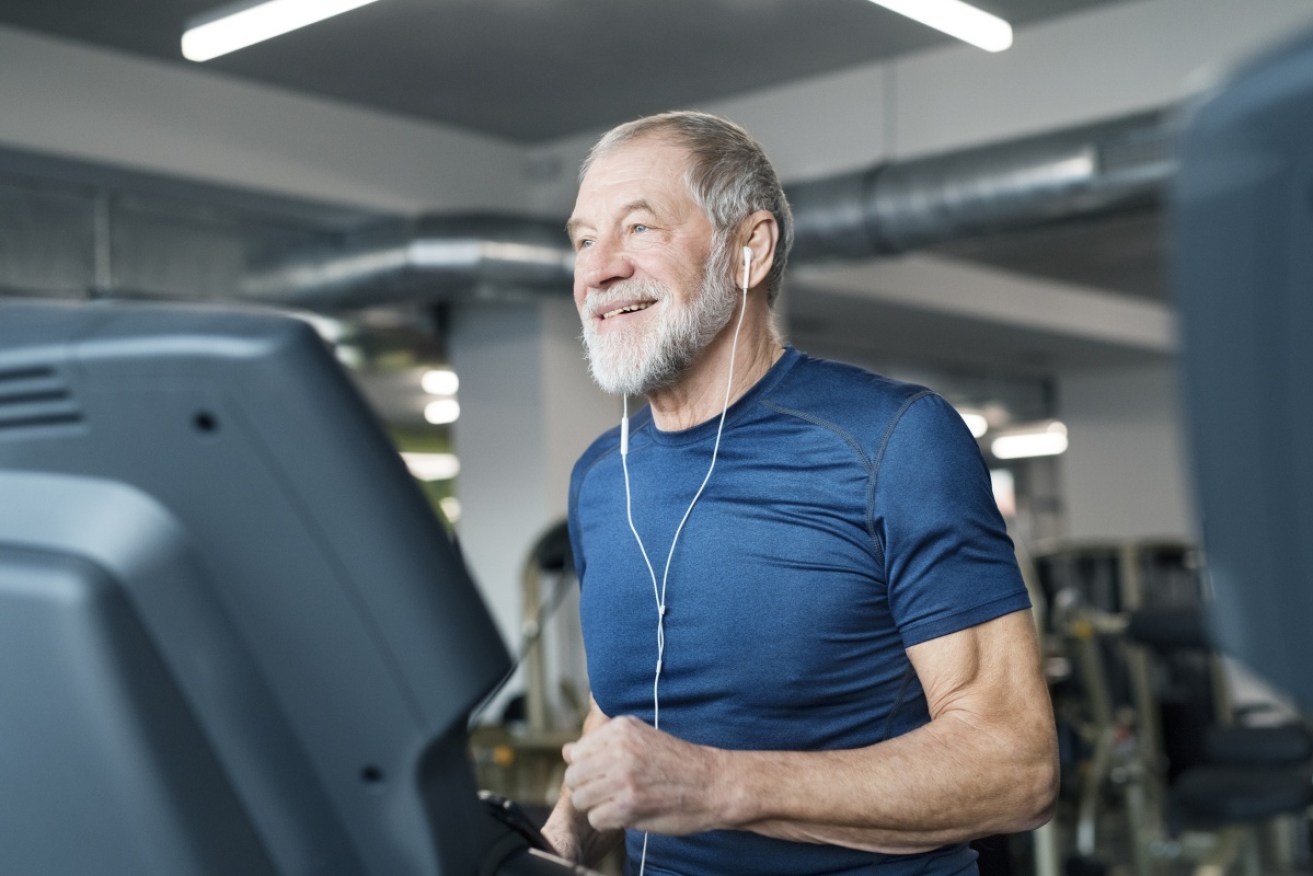Just 20 minutes of exercise a day lowers your risk of COVID-19 infection


Just 20 minutes on the treadmill can boost your immune response. Photo: Getty
There is very good evidence that physically inactive people are at higher risk of severe outcomes from COVID-19.
A substantial study that followed the progress of 48,440 adult COVID-19 patients from January 2020 to October 2020 – and investigated their levels of physical activity in the previous two years – found that those who had been consistently inactive had a greater risk of hospitalisation, admission to the intensive care and even death.
On the flip side, consistently meeting physical activity guidelines “was strongly associated with a reduced risk for severe COVID-19 outcomes among infected adults”.
But what about protection against being infected in the first place? Do the protective benefits that exercise gives extend to warding off COVID-19?
A new meta-analysis and systemic review of previous studies says yes – and actually quantifies the extent of that protection.
Preventative exercise
Doing around 20 minutes of exercise each day is linked to a lower risk of COVID-19 infection – and less severe cases if you do get infected, researchers from the Public University of Navarre, Spain, said.
The best protection comes from “a weekly tally of 150 minutes of moderate-intensity exercise” – just over 20 minutes a day – or 75 weekly minutes of vigorous-intensity exercise.
Overall, people who included regular physical activity in their weekly routine had an 11 per cent lower risk of a COVID-19 infection.
They also had a 36 per cent lower risk of hospital admission; a 44 per cent lower risk of severe COVID-19 illness, and a 43 per cent lower risk of death than physically inactive people.
How does exercise protect you?
As we’ve previously reported, exercise – more than diet – is a more reliable and effective way to avoid premature death from cardiovascular disease.
And that stands even for people with obesity.
Most cardiometabolic risk markers associated with obesity – including high blood pressure, abnormal levels of cholesterol and other fats in the blood – can be improved with exercise training independent of weight loss and by a magnitude similar to that observed with weight-loss programs.
Your heart and bones and blood flow to the brain are all made stronger by exercise.
But, as the researchers note, physical activity can “lessen both the risk of infection and the severity of respiratory infections due, at least in part, to its ability to bolster the immune system”.
It’s a balancing act
Exercise and the immune response is complex, even controversial. Regular exercise promotes a low grade inflammation as a protective measure for a body under stress.
But at the same time, exercise is known to have an anti-inflammatory response, which is certainly helpful in a COVID-19 context.
A 2018 study hypothesized that just 20 minutes of moderate exercise (walking on a treadmill) would improve the body’s anti-inflammatory response by activating the sympathetic nervous system.
The sympathetic nervous system increases the heart rate, blood pressure and breathing rate in order to help the body keep up when you’re jogging or lifting weights.
At the same time, according to the theory from the University of California, San Diego, hormones are released that promote an immune response that actually suppresses the production of monocytic cytokines.
Cytokines, as you’ve no doubt read, are small proteins that are crucial in controlling the growth and activity of other immune system cells and blood cells.
In COVID-19 patients, a massive cytokine response, known as a “cytokine storm”, results in the immune system turning on the body and causing damaging inflammation.
‘Metabolic and environmental factors’
The authors of the new study acknowledge that “the link between regular physical activity and COVID-19 severity is poorly understood, but probably involves both metabolic and environmental factors”.
Their task was to “try and quantify the threshold of physical activity that might be needed to lessen the risks of infection and associated hospital admission and death”.
For this they searched three major research databases for relevant studies published between November 2019 and March 2022, and from an initial haul of 291, they pooled the results of 16.
The studies included a total of 1,853,610 adults, just over half of whom were women. The average age of participants was 53.
The authors write: “Our findings highlight the protective effects of engaging in sufficient physical activity as a public health strategy, with potential benefits to reduce the risk of severe COVID-19.”
The results are published in the British Journal of Sports Medicine.








